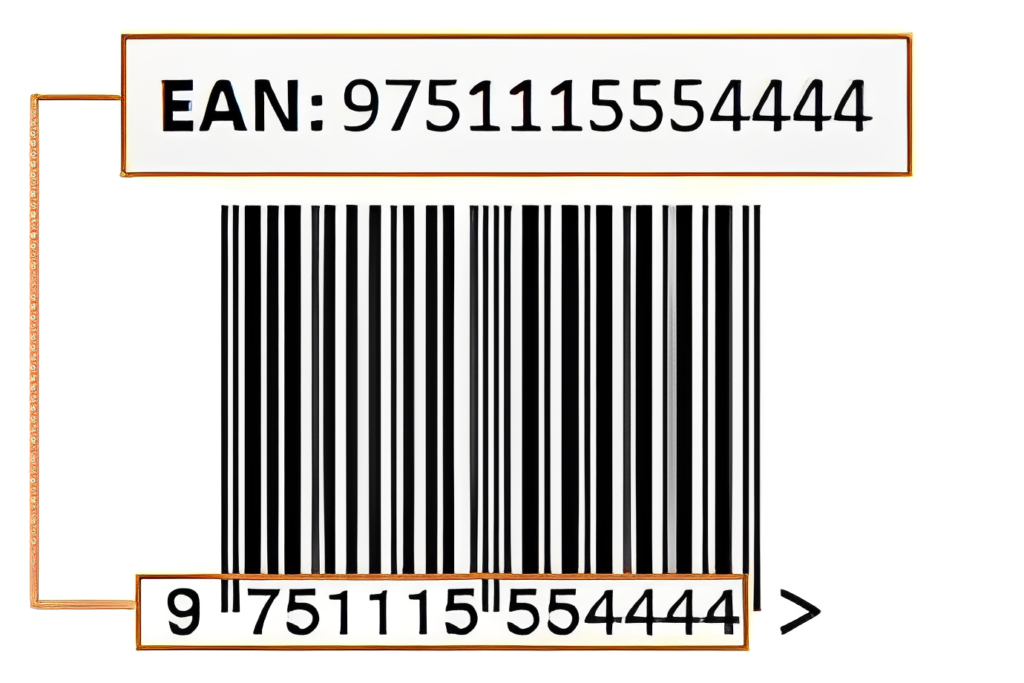What is the Difference Between an SKU and an EAN?
When it comes to managing your inventory and selling products on platforms like Amazon, understanding the various product identifiers is crucial. Two commonly used identifiers are SKU (Stock Keeping Unit) and EAN (European Article Number). In this article, we will explore the difference between an SKU and an EAN to help you better navigate the e-commerce landscape.
What is an SKU?
An SKU, or Stock Keeping Unit, is an alphanumeric product identifier. It serves as a unique code assigned to each product in your inventory. SKUs are used primarily for internal purposes, allowing sellers to manage and track their inventory effectively. These codes can include a combination of numbers and letters, providing a concise way to identify and differentiate products.
SKUs are especially useful when you have a diverse range of products with various variations. Instead of relying on lengthy product titles, an SKU can condense important information into a shorter code. It helps streamline inventory management and facilitates easy identification of products within your own system.
It’s important to note that SKUs are specific to individual sellers and are not visible to customers or other sellers on platforms like Amazon. They are internal identifiers used to organize and track inventory efficiently.
What is an EAN?
EAN, or European Article Number, is an international product identification code represented by a standard barcode. It consists of a 12 or 13-digit number that uniquely identifies a product, its manufacturer, and its attributes. EANs are commonly used in European marketplaces, including Amazon’s European platforms.
Unlike SKUs, which are seller-specific, EANs are universal identifiers recognized globally. They are primarily used for product identification and standardization across different retailers and marketplaces. EANs are often printed on product labels or packaging, allowing retailers and customers to easily scan and identify the product.
EANs are particularly useful in ensuring accuracy and consistency across the supply chain. They enable efficient inventory management, streamline logistics, and facilitate seamless product identification and tracking in the broader marketplace.

The Difference Between SKU and EAN
The main difference between an SKU and an EAN lies in their purpose and scope. While both are product identifiers, SKUs are internal codes used by sellers to manage their inventory, whereas EANs are standardized international codes used for product identification and tracking across various retailers and marketplaces.
SKUs are customizable and specific to individual sellers, allowing for flexibility in organizing and tracking inventory based on their unique requirements. On the other hand, EANs provide a standardized and globally recognized identification system that ensures consistency and compatibility across different platforms and retailers.
In summary, SKUs are internal identifiers used by sellers for inventory management, while EANs are universal codes used for product identification and standardization across the broader marketplace. By understanding the distinction between these two identifiers, you can effectively leverage them to streamline your business operations and optimize your e-commerce presence.

How to create an effective SKU?
Creating effective SKUs is essential for efficient inventory management and streamlined business operations. Here are some best practices to consider when creating SKUs:
1. Keep it unique: Each SKU should be unique to every product or product variation in your inventory. Avoid duplicating SKUs, as this can lead to confusion and errors in tracking.
2. Be descriptive: Include relevant information in your SKUs to provide a clear description of the product. This can include details such as product type, color, size, style, or any other attribute that distinguishes the item. A well-described SKU can help you quickly identify and locate specific products.
3. Maintain consistency: Establish a consistent format for your SKUs to ensure uniformity across your inventory. Consistency simplifies inventory management, reduces errors, and makes it easier to understand and interpret SKUs.
4. Use alphanumeric characters: Utilize a combination of numbers and letters in your SKUs. Alphanumeric SKUs are versatile and allow for a larger number of unique combinations. Avoid using special characters or symbols that may cause issues with inventory management systems.
5. Consider scalability: Plan your SKU system with scalability in mind. As your business grows and introduces new products or variations, ensure that your SKU system can accommodate expansion without becoming overly complex or confusing.
6. Prioritize simplicity: While it’s important to include relevant information, aim for simplicity in your SKUs. Long and convoluted SKUs can be challenging to manage and prone to errors. Strive for a balance between descriptive and concise codes.
7. Test readability: Ensure that your SKUs are easily readable and scannable. If you are using barcodes, test them with scanning devices to ensure accurate and efficient scanning processes.
8. Incorporate source identifiers: Consider including source identifiers in your SKUs if you source products from multiple suppliers or manufacturers. This can help you identify the origin of the product and streamline your procurement processes.
9. Regularly review and update: Periodically review your SKU system to ensure it remains relevant and effective. As your business evolves, you may need to make adjustments or modifications to better align with your inventory management needs.
10. Document your SKU system: Maintain a clear and organized record of your SKU system. This documentation should include information about the structure, conventions, and any specific rules or guidelines associated with your SKUs. This ensures consistency and facilitates training for new team members.
By following these best practices, you can create an effective SKU system that enhances your inventory management, improves efficiency, and helps you stay organized as your e-commerce business grows.
To simplify the overall management of your e-commerce operations, we would recommend using Amazon Easy Tool. Try it for free!




